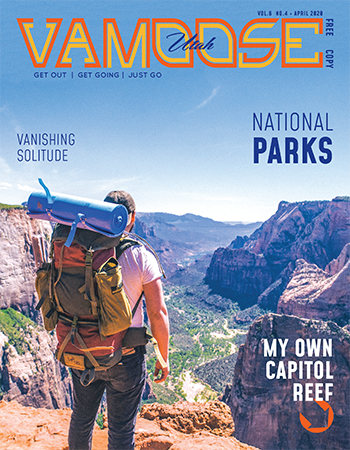What better excuse to get lost in the woods than hunting for mushrooms?
Morel mushrooms are the stuff of legend and fantasy. Scattered upon the ground, they look like a little tribe of forest gnomes with magical powers, like beings from a game of Dungeons and Dragons. They taste like an earthy distillation of fungal flavors and aroma, and command respect from cooks and eaters alike, who speak of them with reverence. For pickers who hear the call, they are a beacon to adventure and profit.
Finding morels is all about finding morel habitat. And to do so, you need to understand morel habits. The single most important distinction in morel behavior is between the so-called “naturals” and “fire followers.”
Naturals come up year after year in the same spots. These stashes are zealously guarded by those who know them (unless they are in Michigan, the government of which publishes online maps so locals can go find them). Naturals come up in spring in wet areas, like near rivers and creeks, when the soil temperature hits about 40 degrees.
But the majority of gathered morels, including virtually all of the ones available for purchase, were harvested in the fire-scarred mountains of the West. While a handful of naturals would be considered a decent harvest for a day’s foray, the fire-following varieties can be astoundingly prolific in spots that were burned the previous summer. Sometimes they grow in such density that it takes effort not to step on them. With buyers paying as much as $20 a pound (they can retail for more than $50/pound), good pickers can easily earn more than a thousand bucks a day for their efforts.
Wait, did I say “easily?” Scratch that.

Even if you live in the same state as a fire—and in Utah, you certainly do—you’ll probably have to drive a few hours and bump along dusty dirt roads for a while in order to get to a spot that may or may not have had morels, and may or may not have already been picked. Simply going to a burned forest is a good first step, but hardly a guarantee of success. Within burns, mushrooms are finicky as to where they will pop up. In my experience they prefer burnt fir stands to pine, but not too burnt—some blazes are so hot they sterilize the soil to the point where nothing will grow.
These fleeting fungi only grow where there is the correct balance of soil humidity and temperature, which means south-facing slopes will “pop” first, north-facing slopes last. You can arrive at the perfect habitat a few days too early or too late and make the long drive home empty handed. The time and gas invested in fruitless picking trips can quickly add up to a significant investment.
According to Don Johnston of the Mushroom Society of Utah (www.UtahMushrooms.com), that worst-case scenario typifies the state’s fire-following morel situation. He’s picked fires in other states, and has a feel for it, but even in promising burnt-forest habitat, he usually strikes out. Johnston suspects Utah is just a little too dry.
Naturals, he says, are the way to go. And no, he won’t tell you where he once picked 16 pounds in a single day. And even if he did, it wouldn’t help you much, as that stash has been petering out in recent years.
Stephanie Cannon, current president of the Mushroom Society of Utah, has had “two or three” days like that herself in 25 years of picking, always naturals. Big harvests usually happen in wet years—not to be confused with 2016, which saw no rain from May through October.
Don’t get your hopes up, she warns. “Feel lucky when you find some, and don’t tell anyone where!”
With that being said, even failed morel hunts can be successful walks in the woods. “It makes a hike more interesting if you come back with a few,” she says. She also looks for shaggy manes, enoki and oyster mushrooms, among others that she knows how to spot. You should, too, unless you have no idea what you’re doing when it comes to mushroom hunting, in which case you should probably contact the Utah Mushroom Society.
In addition to the dangers presented by the mushrooms themselves, there are also dangers inherent to the wilderness: Don’t get lost. Bring water. Don’t go alone. Etc.
I’ve gotten lost, run out of water, tumbled down mountain slopes, been chased by a moose and nearly broken my ankle in the middle of nowhere, all in pursuit of this glorious fungus. Once, picking morels in Alaska, I awoke in my tent to gunshots, as a frustrated mushroom buyer emptied the clip of his pistol into an inflatable raft that had spilled hundreds of pounds of mushrooms into an icy river.
Getting reliable information is tricky in morel country, and those you ask would sooner lend you their ATM cards and tell you their PINs than steer you in the right direction. Thus, the expression: “Anyone foolish enough to ask a picker where he found his will be foolish enough to believe the answer.”
But all the pain, frustration and expense of getting to the goods will quickly evaporate at the sight of a little “fun-guy” poking through the black duff. You quickly scan the area for others, pull out your knife, drop to your knees, and start picking. The endorphins and adrenaline surge with the primal thrill of the hunt as you fill your bucket, and every time you eat them you re-live this feeling, and the sublime connection to the landscape that it embodies. If you dry them for later use, the feelings and flavors can be accessed whenever you rehydrate a few.
So if you have to pay a premium price at the market for them, think about the work, risk, gas and other expenses that the harvester went through. The buyers take on risk as well, as morels can rot very quickly and, even under the best of conditions, will shrink daily. Larry Evans, a picker and buyer in Missoula, Montana, says his inventory loses about 5 percent of its value every day.
Prices are always high at the start of the season, as the northern states begin producing major quantities from their massive fires.
If you want to try your hand at chasing fire-followers, look for burns in high-elevation forested areas. Creeks within burns will provide good humidity as the season progresses, prolonging the “sweet spot” of a flush of fire-following morels.
Speaking of sweet spots, Stephanie Cannon was kind enough to offer a ninja morel-finding trick for one of Utah’s most prevalent—and growing—habitats: suburban sprawl.
Look for newly poured concrete, and the accompanying new landscaping. “White morels are being shipped in on wood chips from the Midwest,” she says. You can find those magical beauties hanging out beneath the new plantings. “It’s only good for the first year, April/May-ish.”
If you just want to cook and eat them, and can skip the adventure, prices will start to ease as the season wears on. So frugal morel purchasers might want to sit tight. Another way to get more fungal mouthfuls for your dollar is to combine morels with your standard button mushrooms. The flavor of the wild ones is so strong that it will augment the relatively mild flavor of the buttons.
Morels should be cooked; eaten raw they can cause gastrointestinal distress. They respond well to being combined with butter and cream, as in the accompanying recipe, that is as good as it gets.




